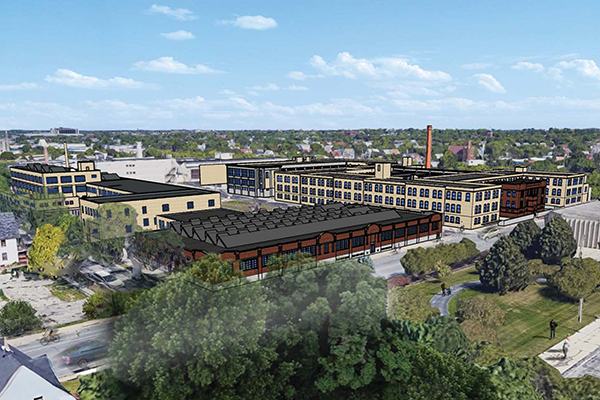Below is an excerpt from the June 5, 2020 Milwaukee Journal Sentinel article “How a young Milwaukee developer landed a large Minneapolis partner for his $59 million north side project” by Tom Daykin
Que El-Amin had the idea: convert a large former industrial complex on Milwaukee’s north side into apartments and commercial space – investing $59 million in one of the city’s poorest neighborhoods.
But El-Amin, a younger African American developer, needed a partner to help secure financing. And the Milwaukee area’s more established firms weren’t interested in the project.
So, with an introduction from a local architect, El-Amin met Brian Roers, co-owner of one of the Minneapolis area’s largest development firms.
Their partnership bought the development site for $2.5 million in May. The project, known as The Community Within The Corridor, is completing its financing package — with work to begin this fall.
“I couldn’t have done it without another developer partner.” El-Amin told the Milwaukee Journal Sentinel. “They really believed in the project when no one else did.”
“We are incredibly excited to do the project,” said Shane LaFave, director of development at Roers Cos.
The development is proceeding while Milwaukee and other cities are seeing large protests against systemic racism after the May 25 killing of George Floyd, an African American man, by a white Minneapolis police officer.
“The Community Within The Corridor will create something that all Milwaukee residents can view with pride,” said Falamak Nourzad, a principal at Continuum Architects + Planners, the project’s architect.
“It will be very impactful because of its size,” she said. “It’s two city blocks.”
The project will redevelop around 7 acres bordered by West Center, West Hadley and North 33rd streets, and Union Pacific railroad tracks. It was once home to Briggs & Stratton Corp.
Six buildings, ranging from one to three stories and totaling 380,000 square feet, will be converted into 197 apartments, 23,000 square feet of commercial space and 40,000 square feet of recreational and community space, according to a city report.
As the development’s name suggests, El-Amin’s vision is to create a community within Milwaukee’s North 30th Street Industrial Corridor. The corridor runs through the heart of Milwaukee’s central city, and includes some of the city’s most impoverished neighborhoods.
[ … ]
El-Amin’s plans were unveiled in 2017 when the city approved a zoning change to allow the industrial buildings to be converted into new uses. Meanwhile, El-Amin was talking with larger development firms. He needed a partner to help obtain financing for the project.
But companies in the Milwaukee and Chicago areas that El-Amin approached took a pass. “Nobody thought that it was viable,” he said.
Their reluctance, he said, was understandable given the site’s location.
Minneapolis developer sees site without “preconceived notions”
That changed when Nourzad, of Continuum Architects, connected El-Amin with Brian Roers.
Nourzad’s firm does a lot of work with developers converting historic buildings into housing and other new uses.
She knew Roers Cos. in part by working with his company on Maxwell Lofts, a five-story industrial building at 214 E. Florida St., in Walker’s Point, that was converted into 116 upscale apartments.
Roers saw the project’s potential clearly, El-Amin said, in part because his firm was just entering the Milwaukee market and “didn’t have any preconceived notions” about the location.
Roers Companies, based in Minnetonka, Minn., mainly operates market-rate apartments, including higher-end developments. Its housing properties total over 3,700 units in six Midwestern states.
The firm has done two affordable housing developments, but on a scale much smaller than The Community Within The Corridor, said LaFave, who worked at Minneapolis’ Sherman Associates Inc. before coming to Roers Cos.
El-Amin’s development proposal presented an opportunity for Roers Cos. to expand its Milwaukee presence while partnering with a developer who better understands the central city, LaFave said.
The project, he said, “has a lot of nuance and complexity.”
That includes its financing package, which features affordable housing and historic preservation tax credits. Development firms that receive affordable housing tax credits must provide apartments at below-market rents to people earning from 30% to 80% of the local median income.
[ … ]
Journal Sentinel subscribers can read the full article here: https://bit.ly/2UvTcgO.
Rendering courtesy of Continuum.
